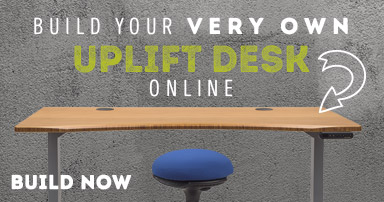Ergonomic Chairs: Simplified
Posted by Ryan O on Oct 14th 2014
There are so many chairs out there with “ergonomic” in their names. One chair may have a list of adjustments that fills a page, and the other may look the same, but only have a few adjustments. But what really makes a chair ergonomic? To improve the designers’ abilities to meet the needs of the most users, and prevent injury amongst these users, several organizations have created standards. These standards are quite complex, listing many different specifications for ergonomic chairs adjustments, but what they all boil down to are just 5 basic adjustments.
Seat Height: This is an adjustment that practically all ergonomic chairs have in common. In order to find a chair that fits you appropriately, you need to be able to adjust the seat height so that your thighs are parallel to the floor, making a right angle when your feet are flat on the ground. There are chairs out there like the Steelcase Amia which have shorter and taller cylinder options, to fit even more people.
Seat pan: This may be one you don’t think about much, but it is definitely important. If you have long legs (like me) and sit in a chair without an adjustable seat, the seat may press into the backs of your thighs, making sitting uncomfortable. But, with a seat pan adjustment, like the one you would find on a Raynor Ergohuman, you can move the seat forward, leaving 2-3 inches of space between the back of your legs and the seat, to better support your upper legs.
Lumbar support: Here is one of those things that you will see on office chairs everywhere, making you think they are ergonomic, but if it isn’t adjustable, then you aren’t looking at an ergonomic chair. I got an office chair for Christmas many years ago, and thought it was so fancy, because it had a really curvy lumbar support. But it wasn’t until I started working here that I realized what I was looking at was just an attempt at an ergonomic chair. Since the seat back wasn’t adjustable, the lumbar couldn’t be put where I needed it. If you take a look at a chair like the Humanscale Liberty, you won’t see a device in the middle of the seat back that makes you think “lumbar support,” but you can adjust the seat back so that the curve of the chair cradles your spine, putting the lumbar support right where you need it.
Arm rests: This is where things get a little more complicated. According to ANSI guidelines, “[The armrests] shall provide sufficient clearance to allow the user to sit or stand without interference." This means, if you have armrests that don’t allow you to drop your arms so there isn’t any tension at your shoulders (as if you were standing with your arms at your side), then you would be better off without armrests, or by getting a chair like the Humanscale Freedom, which allows you to lower the armrests nearly to the seat, to accommodate a wide range of users. With your armrests, you should be able to keep your shoulders relaxed, so that your hands are slightly below your elbows when you put your forearms on the pads. My Christmas present definitely did not have arms like this, and caused many years of discomfort.
Tilt: Pretty straight forward – the chair needs to be able to move with you. The back needs to tilt to conform to the natural shape of your spine, and keep it supported. Some chairs have further adjustments to add tension to the recline, or lock it in place, and there are some, like the Steelcase Think, which have a synchro-tilt mechanism, providing support in proportion to your body weight, keeping you perfectly balanced as you recline.
Remember, an ergonomic chair can have many more adjustments than the ones I mentioned, but they are bonuses. Without these 5 basic adjustments, it will be more difficult to prevent injury and increase productivity during your workday when you use your ergonomic chair.
To learn more about ergonomic chairs, visit TheHumanSolution.com.
Related Reads




